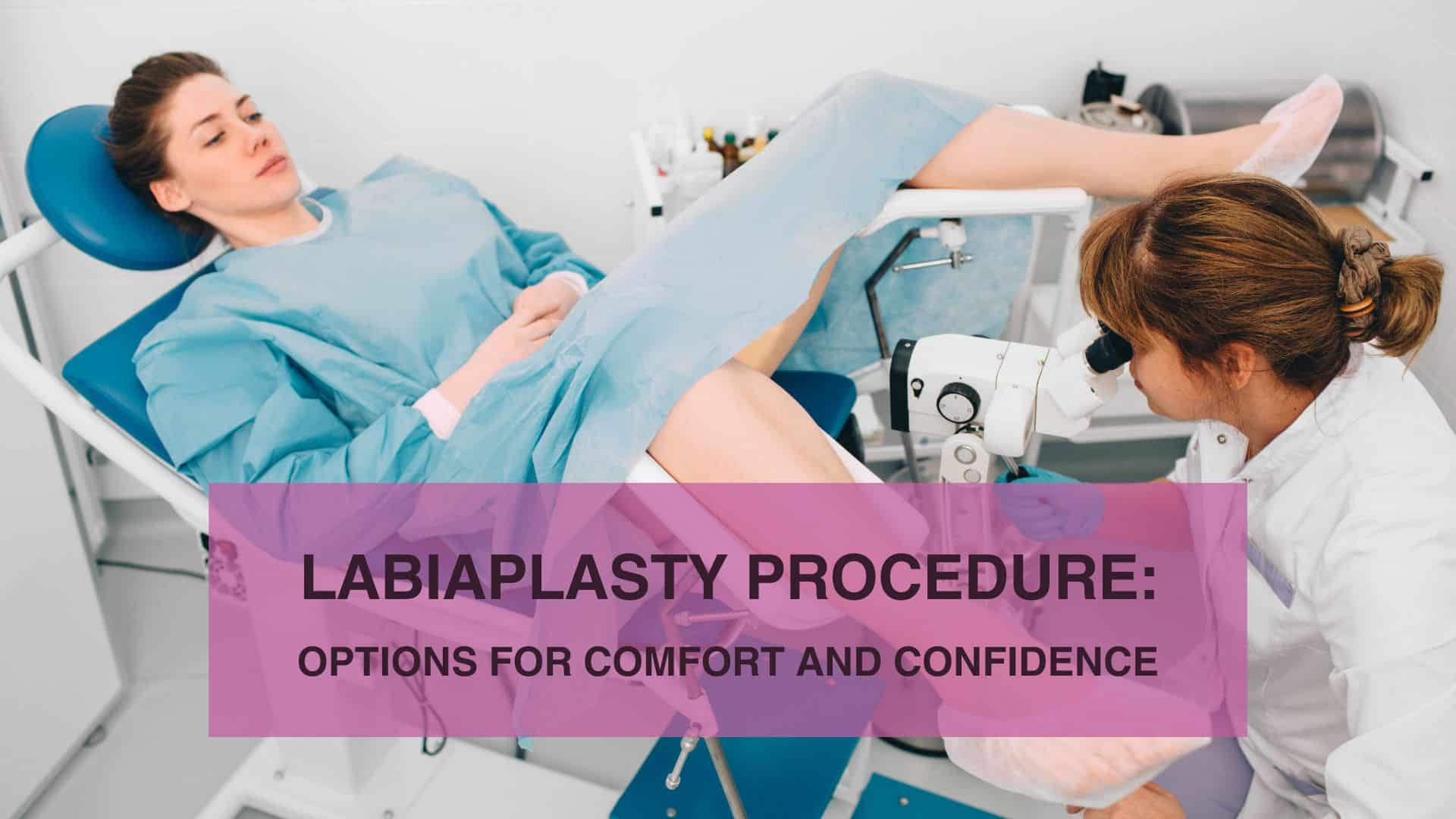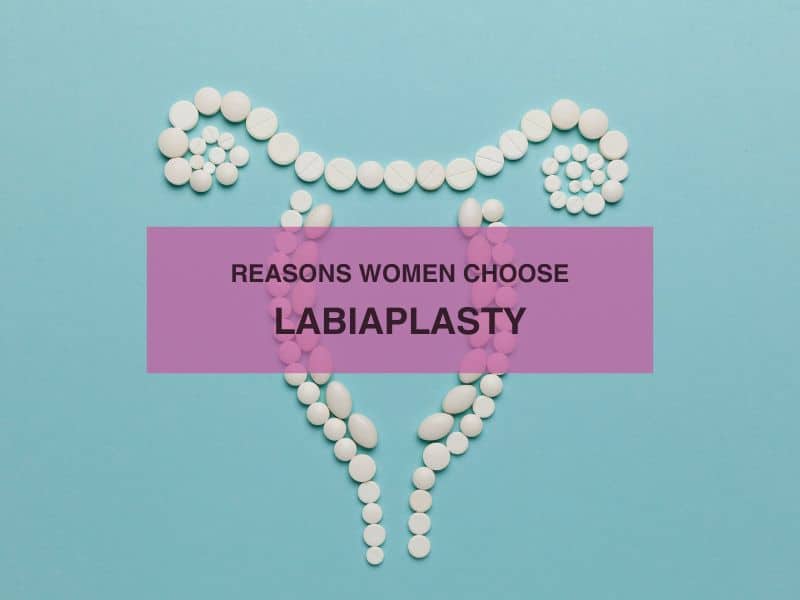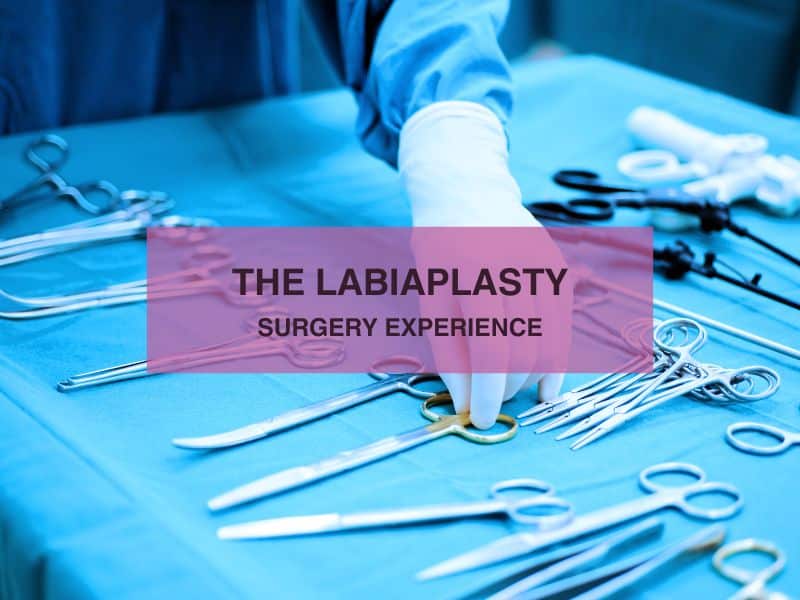Labiaplasty Procedure: Options for Comfort and Confidence
Written by: Dr. Dahlia Rice. Posted in: Blog

Many women silently endure physical soreness and emotional distress due to enlarged or asymmetrical labia. If you experience discomfort during physical activities or feel self-conscious in intimate situations, labiaplasty may offer a solution.
Labiaplasty is a surgical procedure gaining recognition for its functional and cosmetic benefits. Here’s everything you need to know about the labiaplasty procedure, including who might benefit from it and what to expect.
Table of Contents
ToggleWhat is Labiaplasty?
Labiaplasty is a surgical procedure designed to reduce the size of the labia minora (inner vaginal lips) so they are flush with the labia majora (outer vaginal lips). Unlike other forms of vaginal rejuvenation that might use energy devices such as lasers or radiofrequency, labiaplasty is specifically a surgical procedure.
Reasons Women Choose Labiaplasty
If you’re considering labiaplasty, you’re likely experiencing a mix of emotions alongside physical pain or irritation. Your journey is deeply personal. Women choose this path for many valid reasons, including:
Physical Discomfort
An enlarged or long labia can twist, turn, and become pinched during daily activities. This can cause pain when exercising, when wearing fitted clothing, or during sex.
Hygiene Concerns
Excess labial tissue can make cleansing difficult and potentially harbor bacteria, leading to recurrent urinary tract infections and general chafing.
Emotional Wellbeing
Beyond physical considerations, women seek labiaplasty to address the following:
- Self-consciousness during sexual activity
- Anxiety about labia being visible through clothing
- Desire to restore a more youthful look following changes from childbirth or aging
Types of Labiaplasty Procedures
Here are two widely-accepted techniques surgeons use to perform labiaplasty procedures for enlarged labia minora.
Trim Procedure
The trim method is the original and most widely used technique. During this procedure:
- Excess tissue is removed along the edge of the labia minora
- The tissue is sutured to create symmetry with the labia majora
- This approach is best for cases where darkened edges need to be addressed
The advantage of the trim procedure is its straightforward nature and effectiveness in reducing visible labial tissue. However, it does remove the natural edge of the labia, which some patients and surgeons prefer to preserve.
Wedge Procedure
The wedge technique, pioneered by Dr. Gary Alter, offers an alternative approach:
- A partial-thickness wedge of tissue is removed from the thickest part of the labia minora
- The submucosa (tissue beneath the mucous membrane) remains intact
- The natural wrinkled edges of the labia are preserved
- The result is a more natural appearance post-surgery
This procedure particularly benefits women who want to maintain the natural edge appearance of their labia while reducing its size. Preserving the wrinkled edges creates a result that looks completely natural after healing.
Other Specialized Techniques
Beyond these approaches, surgeons may also use specialized techniques, including de-epithelialization methods, custom combination approaches, and modified procedures for unique anatomical needs. These additional options demonstrate how personalized this procedure can be to address your specific concerns.
Your surgeon will partner with you to determine which technique best aligns with your anatomy and goals. Remember, the right approach is the one that helps you feel most comfortable with your body.
The Labiaplasty Surgery Experience
Think of your initial consultation as a judgment-free space where your experiences are validated and your hopes are heard. During this important first meeting:
- You’ll share your story with a surgeon who understands that discussing intimate concerns takes courage
- Together, you’ll explore how your unique anatomy relates to the pain or concerns you’ve been silently managing
- Visual documentation creates a personalized blueprint for your potential transformation
- You’ll discover which surgical approach might best honor your body’s natural contours while addressing your concerns
- Every question you’ve hesitated to ask elsewhere finds answers in this confidential conversation
This foundation-building consultation is your opportunity to become an active partner in your care. Many women describe feeling an immediate sense of relief just from speaking openly about concerns they’ve kept private for years. Bring your questions, hesitations, and hopes.
Preparing for Surgery
Before your procedure, you may need:
- Blood work and other preoperative tests
- Instructions about medications to avoid
- Guidelines for fasting before surgery
- Information about what to wear and bring on surgery day
The Procedure
Labiaplasty is typically performed as an outpatient procedure. You’ll go home the same day, especially if you’re not combining it with other cosmetic surgery procedures. Labiaplasty surgery usually involves:
- Administration of either local anesthesia with sedation or general anesthesia
- Surgical marking to guide tissue removal
- Careful excision of excess skin using the chosen surgical technique
- Closure with absorbable sutures
- Application of surgical dressing
- The total procedure time is approximately one hour
Recovery Process
Your healing journey after labiaplasty is critical and deserves your care and attention. While everyone’s body heals at its own pace, most women need about six weeks for recovery. During this time, being gentle with yourself physically and emotionally will help ensure your beautiful results.
Let’s walk through what you might experience during your recovery time:
Immediate Post-Op (First Week)
- Mild to moderate pain managed with prescription medication
- Significant swelling and bruising
- Cold compresses help reduce swelling
- Limited movement recommended
- Loose-fitting pants and comfortable clothing are essential
- Regular gentle cleansing with patting dry afterward
Weeks 2-4
- Decreasing pain and swelling
- Transition to over-the-counter pain relievers
- Gradual return to light activities
- Continued avoidance of snugly fitting clothing
- No strenuous exercise or physical activities
Weeks 4-6
- Continued healing with diminishing discomfort
- Most swelling resolved
- Begin returning to normal activities as cleared by your surgeon
- Still avoid sexual intimacy, strenuous exercise, and activities like cycling
Beyond Six Weeks
- Complete healing takes approximately 6 months.
- After six weeks, the majority of patients can resume normal activities, including sexual activity. Your surgeon will let you know at your follow-up appointment if you are ready.
- You get to see the final results as residual swelling resolves!
Results and Benefits
When performed by an experienced surgeon, labiaplasty delivers both physical and psychological benefits.
Physical Improvements
- Elimination of pain during exercise and intimate activities
- Improved comfort in fitted clothing
- Reduced irritation and chafing
- Enhanced hygiene and potentially fewer infections
Emotional Benefits
- Increased confidence in intimate situations
- Freedom to wear preferred clothing
- Improved body image and self-esteem
- Greater comfort during physical activities previously avoided
Most women report high satisfaction with their results, often expressing they wish they hadn’t waited so long to address their concerns. The physical relief combined with newfound confidence can be transformative.
Frequently Asked Questions
What does a labiaplasty cost?
Labiaplasty typically costs between $3,500 and $4,000. This includes the surgeon’s fees, facility fees, and anesthesia costs. Many practices offer financing options for patients who cannot pay the full amount upfront. Insurance typically doesn’t cover labiaplasty or vaginoplasty cost unless it is deemed medically necessary.
How painful is labiaplasty?
Most women experience mild to moderate discomfort for the first few days, which is effectively managed with prescribed pain medication. By 1-2 weeks post-surgery, soreness significantly decreases. Cold compresses and following care instructions help minimize pain during recovery.
What are the disadvantages of labiaplasty?
Potential disadvantages include temporary discomfort during recovery, possible scarring (though usually minimal), and rare complications like infection or wound separation. Some women experience temporary changes in sensation that typically resolve during healing.
Does labiaplasty affect pleasure?
When performed correctly, labiaplasty should not affect sexual pleasure. The procedure preserves nerve endings. Patients report enhanced sexual experiences due to increased comfort and confidence.
How do I know if labiaplasty is right for me?
Consider labiaplasty if you experience physical irritation from enlarged labia minora during daily activities, exercise, or intimate situations; if you feel self-conscious about how your labia looks; or if redundant skin causes hygiene difficulties. A consultation with a board-certified plastic surgeon specializing in this procedure can help determine if you’re a good candidate.
Ready for Your Labiaplasty Consultation?
If you’ve been silently dealing with discomfort or self-consciousness due to enlarged labia, contact Dr. Dahlia Rice at DMR Aesthetics to schedule a confidential consultation. We’ll discuss your concerns, review your options, and determine if labiaplasty might improve your quality of life.
Call (312) 600-5435 today or visit our website to schedule an appointment.
References
- https://www.americanboardcosmeticsurgery.org/procedure-learning-center/body-procedures/feminine-rejuvenation/
- https://www.healthline.com/health/labiaplasty-recovery
- https://www.medicalnewstoday.com/articles/labiaplasty-recovery
- https://my.clevelandclinic.org/health/treatments/21953-labiaplasty
- https://www.plasticsurgery.org/news/blog/what-is-a-labiaplasty-and-what-does-it-involve
- https://www.ncbi.nlm.nih.gov/books/NBK448086/


